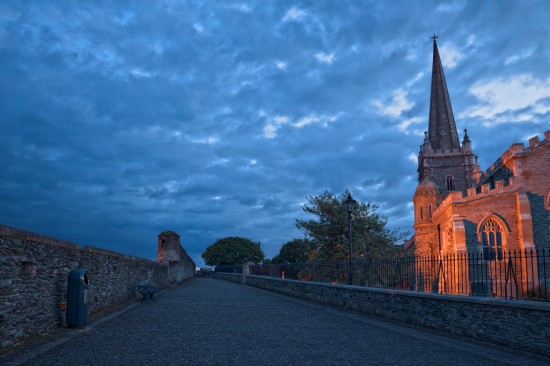There has been a lot of talk about the diocese in California that is buying the Crystal Cathedral for $57 million. The story brings with it lots of accusations from non-believers, as well as some Protestants, saying the Catholic Church wastes money on such things when it could be spending those millions to aid the poor.
But is it really an either/or issue? Is buying a beautiful church building “wasteful”? Does building new churches actually deprive the poor of much needed aid?
A reading from Mark, during Lent, helped me put this issue in perspective. Now I can cite five reasons why churches should be built, why they should be beautiful and how we should answer such critics.
1) All four of the Gospel writers talk about the “anointing of Jesus” which means there is a powerful message for us about the use of these expensive oils, or the story wouldn’t be repeated. In Mark we hear about a woman who pours an entire bottle of costly oil on Jesus head. The disciples (in the Gospel of John that disciple is identified as Judas) point out the extravagance of this act and point out that money for the oil could have offered great aid to the poor. But Jesus replies that the woman has done a good thing and she should not be bothered about her kindly act. (Matt 26:6-13/ Mark 14:3-9).
The reason we build churches is the same reason the woman (or women) anointed Jesus. We are called to honor Him. We praise God and thank Him by creating beautiful places of worship. And these beautiful places become dwelling places for Him as He comes in the form of the Eucharist. How can that be anything less than good use of our resources?
2) A beautiful cathedral not only honors God, it becomes a beacon calling us to prayer. Just as a lighthouse, can help ships find their way in a storm, a church shines a light for those experiencing spiritual storms.
Traditionally, churches have been the central point in communities. As the tallest building in the center of town churches have been built to symbolically say, “The lives of the people here revolve around God.”
3) Beauty uplifts the poor. Anyone who is desperate or in mourning, has a soul-felt desire to be lifted up by something holy and good. It is precisely in times of crisis and hardship when we need to be able to look up and rest our eyes on a crucifix or a beautiful painting of the Good Shepherd. The widow who gave her last coin to the Church is a symbol of the comfort that churches can provide to those in need.
4) God instructed King David in how to gather the materials for the temple which was to be built by King Solomon. The temple was to be grand and glorious, inlaid with precious gemstones. God was commanding that honor be given to the King of Kings.
Just as it is proper and respectful to clean the house before an important guest arrives, it is proper and respectful to build magnificent structures for the Lord of Lords.
5) And the truth is that the Catholic Church has always been the leader in caring for the poor, providing service to families, building a health care system for the needy and starting educational institutions for all!
The choice is not Either/Or—either churches or food programs. There is an absolute necessity for both!
When a man challenged me about this issue, I was thinking about all the money that is poured into athletic contracts, sports programs and entertainment in our worldly culture. Football players make millions. Actors get paid a fortune. Our culture values these things and pays exorbitant prices for such things.
It is really about priorities. The Catholic Church has shown throughout history that it makes service to the poor a top priority just as Jesus did.
Additionally, the Church calls us to honor God in the spirit of the first commandment.
About the Author

Guest
We welcome guest contributors who graciously volunteer their writing for our readers. Please support our guest writers by visiting their sites, purchasing their work, and leaving comments to thank them for sharing their gifts here on CatholicMom.com. To inquire about serving as a guest contributor, contact editor@CatholicMom.com.



.png?width=1806&height=731&name=CatholicMom_hcfm_logo1_pos_871c_2728c%20(002).png)
Comments